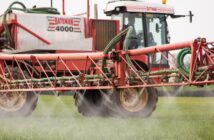Roger Vickers, chief executive of PGRO (Processors and Growers Research Organisation) announced today that the web site for ‘LEGVALUE’ is now live (www.legvalue.eu). There is also a LEGVALUE twitter account at @LEGumeVALUE.
“LEGVALUE is a new European research programme promoting sustainable agricultural systems in the EU. The objective is to promote the development of sustainable and competitive legume-based agricultural systems for animal and human feed in the EU. A significant driver of this objective is the perceived need to improve the protein autonomy of the European Union.
“PGRO is pleased to be part of this integrated, and collaborative approach between researchers, technicians and commercial players. LEGVALUE will examine 24 European farm networks and 31 case studies including on farm consumption, local and national supply chains. The project will evaluate the agronomic, economic and environmental benefits of producing and using legumes in both conventional and organic agriculture. It will take into account the diversity of markets, analyse added value chains and provide a range of alternative solutions (‘Transition pathways’) to improve the economic interest all along the supply chain.”
A summary of the perceived opportunities and threats arising from the renewed interest in pulses is given below:
Opportunities
✓ Favourable outlook for pulses and legumes in respect of human health and the need for dietary change and protein consumption.
✓ Strong interest of agri-food manufacturers and a shared willingness in Europe to develop the production of pulse and legume based food and feed products.
✓ A local source of protein and a wide diversity of outlets requiring increased legume production in Europe.
✓ A base of knowledge and expertise available to be rolled out on a European scale.
✓ The provision of better market information as well as agronomy and economic specialisation tools.
✓ The continued deficit and import imbalance in EU protein requirements contributes to the project and towards CAP developments of the future.
Threats
× The creation of an open market favourable to imports of proteins in Europe.
× A slowdown in the market for animal feed.
× A dominance of low cost product from Canada and Australia in export for human food.
× A fragility of the breeding programmes for new legume varieties.
× A lack of competitiveness (excluding environmental benefits) in the price paid to producers.
× Inconsistent grain quality compared to imports.
× Inconsistent supply and lack of market visibility regarding supply and demand.




